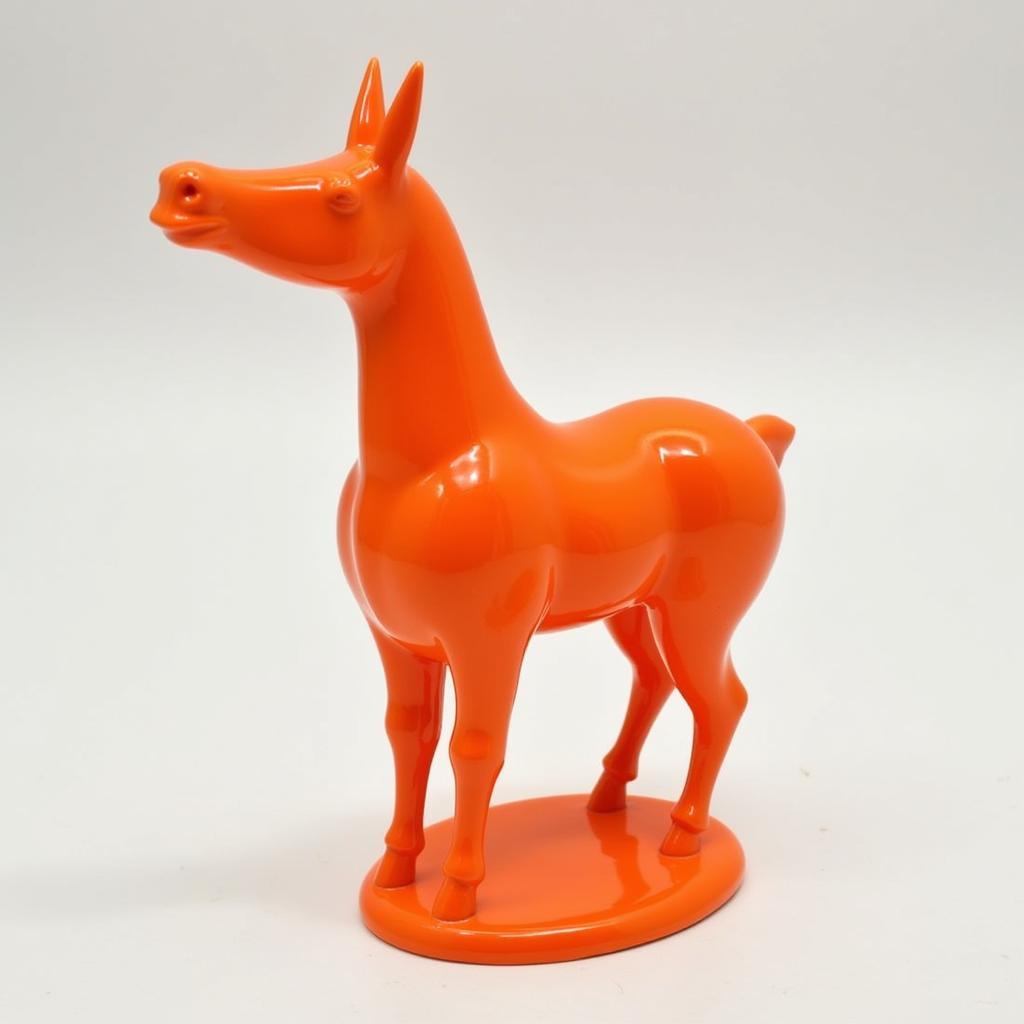The Bitossi Style Horse is a unique and captivating piece of ceramic art, often sought after by collectors and horse enthusiasts alike. These distinctive figurines, with their vibrant colors and stylized forms, represent a specific period in the history of the renowned Italian ceramics company, Bitossi. Let’s delve into the world of these charming equine sculptures and discover what makes them so special.
The History of the Bitossi Ceramic Horse
Bitossi, a family-owned company based in Montelupo Fiorentino, Italy, has a long and rich history dating back to the 16th century. However, the Bitossi style horse that we recognize today emerged in the mid-20th century, particularly during the 1950s and 1960s. This era saw a flourishing of artistic creativity at Bitossi, driven by Aldo Londi, the company’s creative director. Londi’s innovative designs and the company’s experimentation with glazes and shapes led to the creation of the iconic Rimini and Tropic lines, which often featured horses.
Recognizing a Bitossi Horse
Bitossi horses are characterized by their stylized, almost abstract forms. They are rarely realistic depictions, instead capturing the essence of the horse through simplified lines and bold colors. The glazes used are often brightly colored and textured, adding to the unique aesthetic. Common colors include vibrant blues, greens, yellows, and oranges, often combined in contrasting patterns.
Collecting Bitossi Style Horses
Collecting Bitossi horses can be a rewarding and enjoyable hobby. The variety of colors, shapes, and sizes ensures there is something to appeal to every collector. Rarity and condition are key factors in determining the value of a Bitossi horse. Pieces from the Rimini and Tropic lines are highly sought after, as are those with particularly unusual glazes or markings.
Determining Authenticity
It’s important to be aware of potential imitations when collecting Bitossi horses. Genuine pieces will typically bear the Bitossi mark, which can vary depending on the period. Researching the different marks and learning how to identify them can help you avoid purchasing fakes. Consulting with reputable dealers and experts is also recommended, especially when considering high-value pieces.
 Bitossi Tropic Orange Horse Figurine
Bitossi Tropic Orange Horse Figurine
Caring for Your Bitossi Horse
Bitossi horses are primarily decorative items, and with proper care, they can last for generations. Dust them regularly with a soft cloth to maintain their vibrant colors. Avoid using harsh chemicals or abrasive cleaners, as these can damage the delicate glazes. Handle them with care, as they can be fragile, especially older pieces.
Displaying Your Collection
Bitossi horses can add a touch of artistic flair to any home. Display them on shelves, mantels, or in glass cabinets to protect them from dust and accidental damage. Grouping pieces together by color or style can create a visually appealing display.
“The beauty of Bitossi horses lies in their unique artistry. They are more than just figurines; they are miniature works of art that capture the spirit and energy of the horse in a truly unique way.” – Dr. Eleanor Vance, Art Historian specializing in Italian Ceramics
Bitossi Horses: A Timeless Investment
Bitossi style horses are more than just decorative objects. They represent a piece of Italian ceramic history and offer a connection to the artistic legacy of Aldo Londi and the Bitossi company. Whether you are a seasoned collector or simply appreciate the beauty of these unique pieces, a Bitossi horse is a timeless investment that will continue to bring joy and artistic inspiration for years to come.
Conclusion
The Bitossi style horse stands as a testament to the enduring appeal of handcrafted artistry. Their vibrant colors, stylized forms, and unique glazes make them highly sought-after collectibles. By understanding the history, recognizing authenticity, and caring for these delicate pieces, you can fully appreciate the timeless beauty and artistic value of the Bitossi horse.
FAQ
- What makes Bitossi horses unique? Their stylized forms, vibrant glazes, and connection to the mid-20th century Italian ceramics movement.
- How can I tell if a Bitossi horse is authentic? Look for the Bitossi mark and consult with reputable dealers or experts.
- How should I care for my Bitossi horse? Dust regularly with a soft cloth and avoid harsh chemicals.
- Where can I find Bitossi horses for sale? Antique shops, online marketplaces, and specialized dealers.
- What is the value of a Bitossi horse? Value depends on factors like rarity, condition, and desirability of the specific piece.
- Are Bitossi horses still being made? While Bitossi continues to produce ceramics, the specific styles and glazes of the mid-20th century are no longer in production, making older pieces highly collectible.
- What are the most popular Bitossi horse lines? Rimini and Tropic.
Related Articles:
- The History of Bitossi Ceramics
- Caring for Vintage Ceramics
- Building a Collection of Italian Pottery
Need assistance? Contact us: Phone: 0772127271, Email: [email protected] or visit us at: QGM2+WX2, Vị Trung, Vị Thuỷ, Hậu Giang, Việt Nam. We have a 24/7 customer support team.